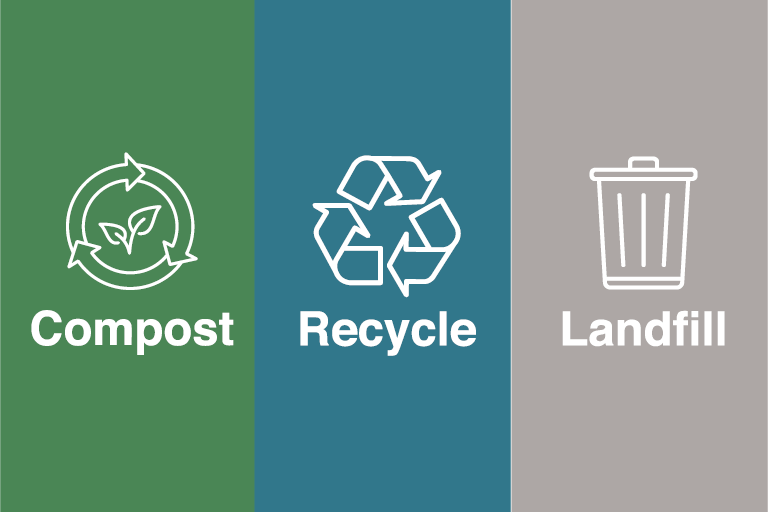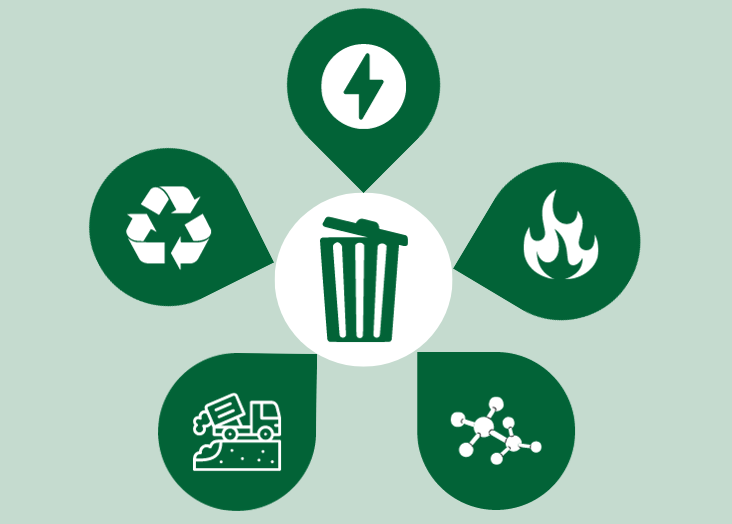The Influence of Recycling Lives Services on Communities and the Setting
Checking Out Various Types of Waste in Modern Waste Monitoring Systems
The modern landscape of waste management includes browsing a complex variety of waste types, each requiring specialized handling and disposal methods to mitigate environmental impacts. Metropolitan solid waste, unsafe waste, digital waste, and organic waste each present distinctive challenges and possibilities for resource recuperation.
Municipal Strong Waste
Metropolitan strong waste, typically described as household trash or rubbish, incorporates a selection of thrown out materials produced by domestic, commercial, and institutional resources within a town. This waste stream generally consists of things such as product packaging, food scraps, backyard trimmings, paper, plastics, fabrics, and discarded family products. The monitoring of local solid waste is an essential element of urban preparation and public health and wellness, demanding efficient collection, transportation, and disposal systems.
Reliable waste management systems are made to lessen ecological effect while making the most of source recovery. This often includes a mix of techniques including recycling, composting, and landfilling. Recycling programs target products like paper, glass, steels, and particular plastics, diverting them from land fills and reestablishing them right into the manufacturing cycle. Composting organic waste, such as food scraps and yard trimmings, not just reduces landfill usage however additionally produces valuable soil changes.
Districts should likewise deal with the financial and logistical difficulties linked with waste monitoring. Carrying out pay-as-you-throw systems, boosting public understanding, and buying technology can substantially enhance waste diversion prices. By integrating these methods, districts can cultivate lasting communities, minimize greenhouse gas discharges, and conserve natural deposits.
Hazardous Waste

Efficient contaminated materials monitoring entails numerous important steps: recognition, therapy, segregation, and disposal. Recognition entails the category of waste based on its hazardous buildings. Segregation guarantees that unsafe products are kept separately from non-hazardous waste to prevent cross-contamination. Treatment approaches, such as chemical neutralization, incineration, and stablizing, are used to reduce the toxicity, volume, or flexibility of the waste. Disposal alternatives, including secure land fills and below ground storage space, are selected to make certain lasting control.
Regulatory frameworks, such as the Resource Preservation and Healing Act (RCRA) in the USA, offer guidelines and criteria for hazardous waste management. Adherence to these guidelines, paired with innovations in waste treatment technologies, is essential in reducing the threats linked with dangerous waste.
Electronic Waste
Digital waste, frequently referred to as e-waste, stands for a quickly expanding difficulty in waste management systems globally. This kind of waste includes disposed of electronic tools and devices such as mobile phones, computers, tvs, and other digital home appliances. The fast speed of technical advancement, coupled with reducing item lifespans and customer demand for the current tools, has greatly enhanced the quantity of e-waste generated yearly.
E-waste is particularly bothersome because of its complicated make-up, commonly consisting of dangerous materials like lead, cadmium, and mercury, which posture significant environmental and wellness risks if not appropriately handled. Alternatively, e-waste also has important materials such as copper, gold, and silver, which can be recouped and recycled. The dual nature of e-waste-- both important and dangerous-- necessitates specialized handling, reusing, and disposal procedures.
Effective e-waste monitoring includes strict regulative structures, durable collection systems, and progressed reusing technologies. Public awareness and engagement are essential, as improper disposal practices, such as prohibited dumping and casual recycling, worsen ecological contamination and carcinogen. Enhancing e-waste monitoring methods is vital for minimizing environmental impact and recuperating valuable sources in an increasingly electronic world.

Organic Waste
Organic waste, consisting of cooking area scraps, backyard trimmings, and farming deposits, stands for a significant section of the global waste stream. This type of waste is eco-friendly, meaning it can be broken down by bacteria right into less complex organic compounds. Regardless of its possibility for natural decomposition, incorrect management of organic waste can bring about unfavorable ecological impacts, consisting of the emission directory of greenhouse gases such as methane, which add to climate modification.
Reliable administration of organic waste is crucial for lessening these environmental influences (recycling lives services). Composting is a commonly taken on technique, transforming natural waste into nutrient-rich garden compost that can enhance soil health and wellness and farming efficiency. Furthermore, anaerobic food digestion is an arising innovation that converts organic waste into biogas, a renewable resource source, and digestate, which can be made use of as plant food
Municipalities and waste management entities have to carry out robust natural waste collection and therapy programs to take full advantage of the benefits of these processes. Public education and learning projects can additionally play a critical duty in motivating households and businesses to different natural waste from other sorts of waste. By focusing on the monitoring of natural waste, cultures can minimize landfill usage, reduced greenhouse gas exhausts, and produce valuable results for farming use.

Cutting-edge Waste Administration
In the world of waste management, ingenious techniques are transforming how cultures manage their refuse, aiming for sustainability and efficiency. These advancements include an array of innovations and methods that enhance recycling prices, lower land fill reliance, and lower environmental impact. One famous advancement is the execution of smart waste bins geared up with sensing units that monitor fill levels and maximize collection paths. This not only decreases gas usage yet likewise decreases greenhouse gas discharges.
An additional remarkable development is the fostering of waste-to-energy (WtE) modern technologies. By transforming non-recyclable waste into useful energy via procedures such as incineration and anaerobic food digestion, WtE decreases garbage dump concern and provides a renewable resource resource. Moreover, advancements in chemical recycling enable the failure of complex plastics right into their original monomers, allowing the creation of new, top quality plastic products.
Furthermore, the circular economic situation design is getting traction, emphasizing the style of items and systems that prioritize reusability and resource effectiveness. This all natural strategy urges industries to lessen waste generation from the outset. Through these innovative strategies, contemporary waste administration systems are not only addressing the immediate obstacles of waste disposal index yet additionally leading the way for a more sustainable future.
Verdict
A thorough understanding of community strong waste, dangerous additional hints waste, electronic waste, and natural waste, combined with the application of innovative waste administration solutions, is necessary for mitigating environmental effects. Integrating modern technologies such as wise waste bins and waste-to-energy systems can improve effectiveness and sustainability. Reliable waste monitoring techniques not just foster resource recuperation yet likewise advertise public recognition and engagement, ultimately contributing to the development of a round economic climate.
The contemporary landscape of waste monitoring entails navigating a complicated selection of waste types, each requiring specialized handling and disposal approaches to mitigate environmental influences. Metropolitan strong waste, unsafe waste, digital waste, and organic waste each existing unique obstacles and possibilities for resource healing.Electronic waste, frequently referred to as e-waste, represents a swiftly expanding difficulty in waste management systems worldwide. Via these cutting-edge strategies, modern-day waste administration systems are not only resolving the prompt difficulties of waste disposal however additionally leading the way for a more sustainable future.
An extensive understanding of municipal strong waste, harmful waste, digital waste, and organic waste, coupled with the execution of ingenious waste administration services, is critical for mitigating ecological impacts. (recycling lives services)